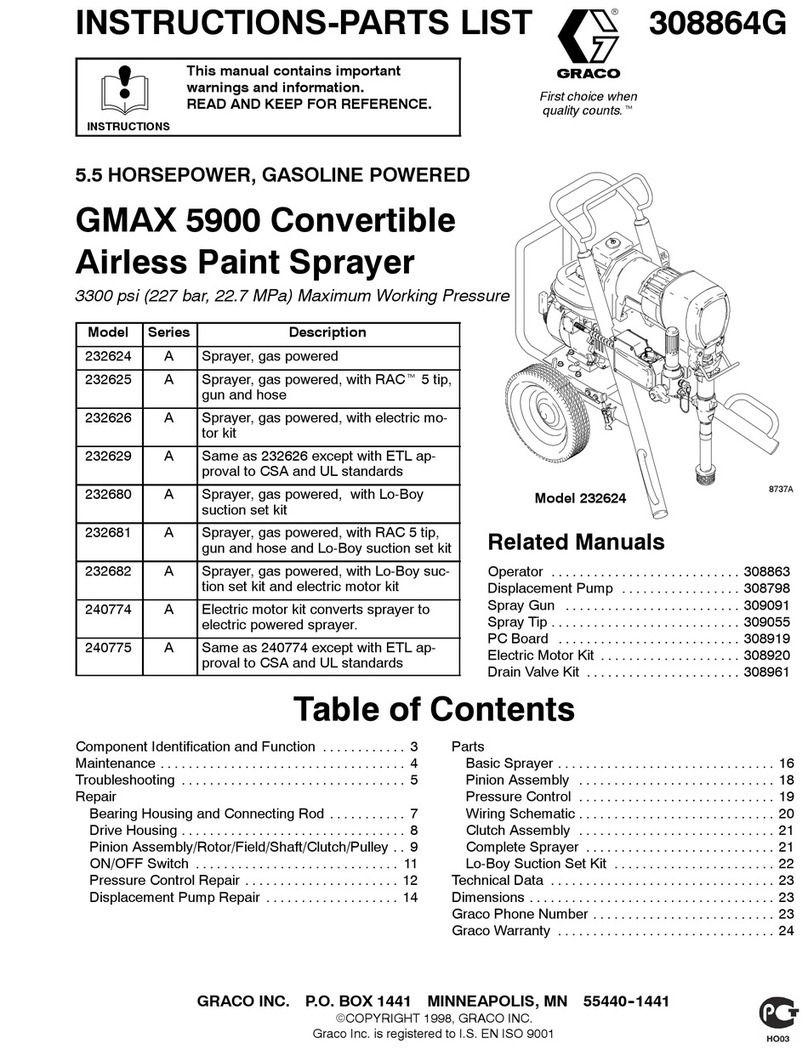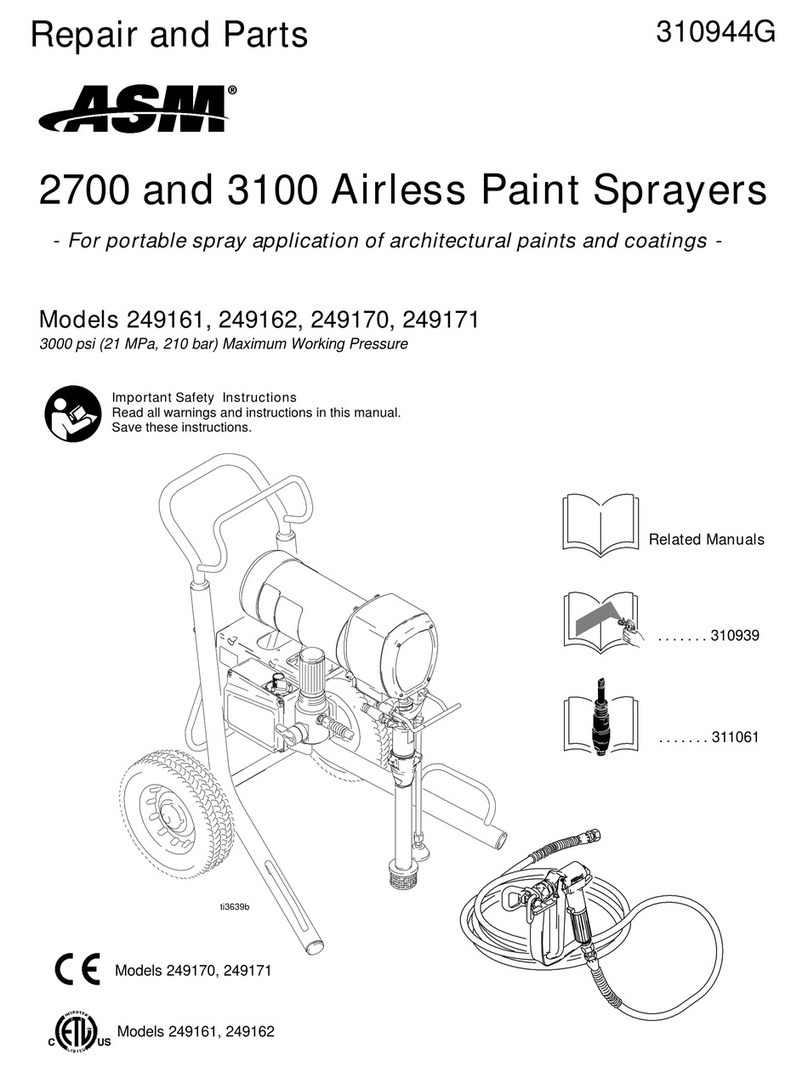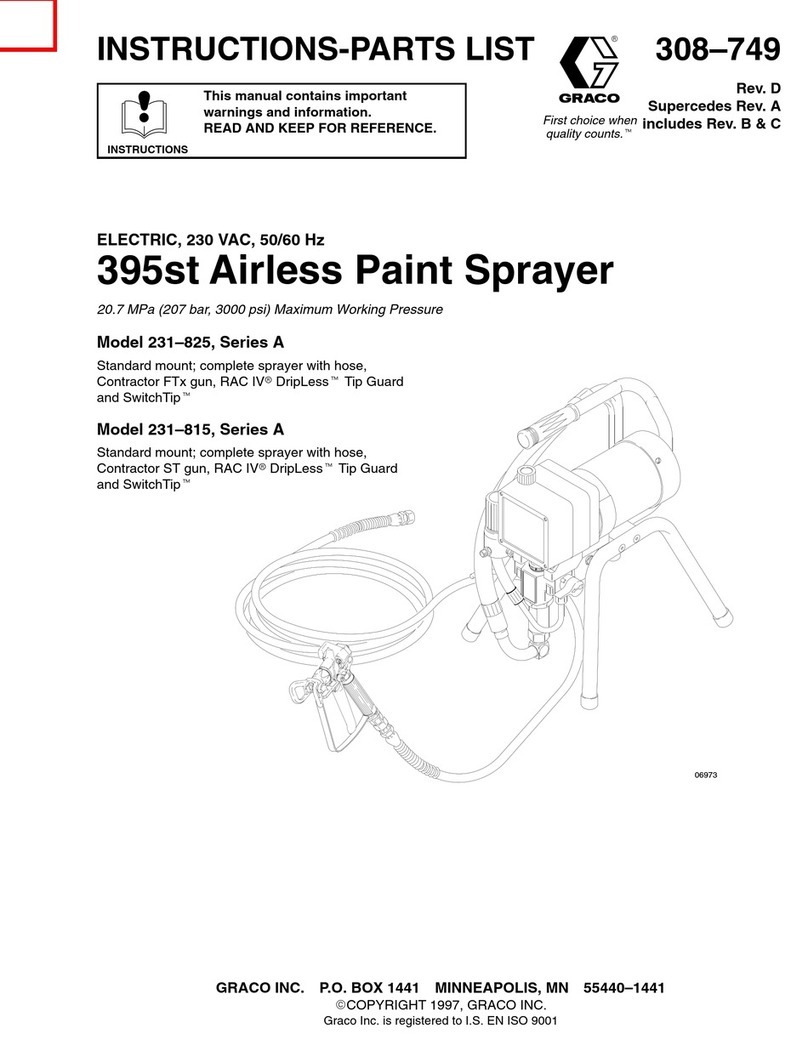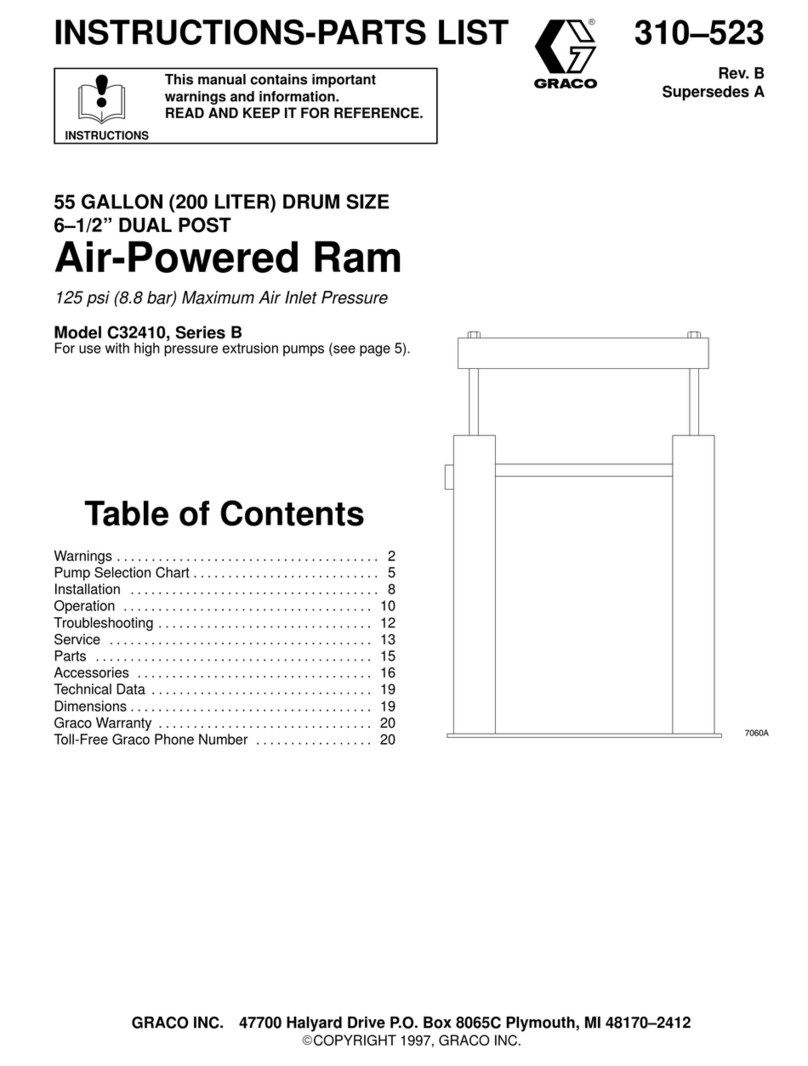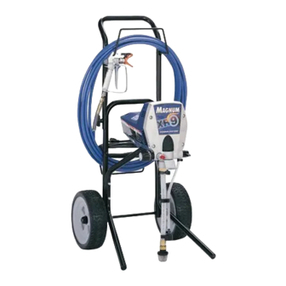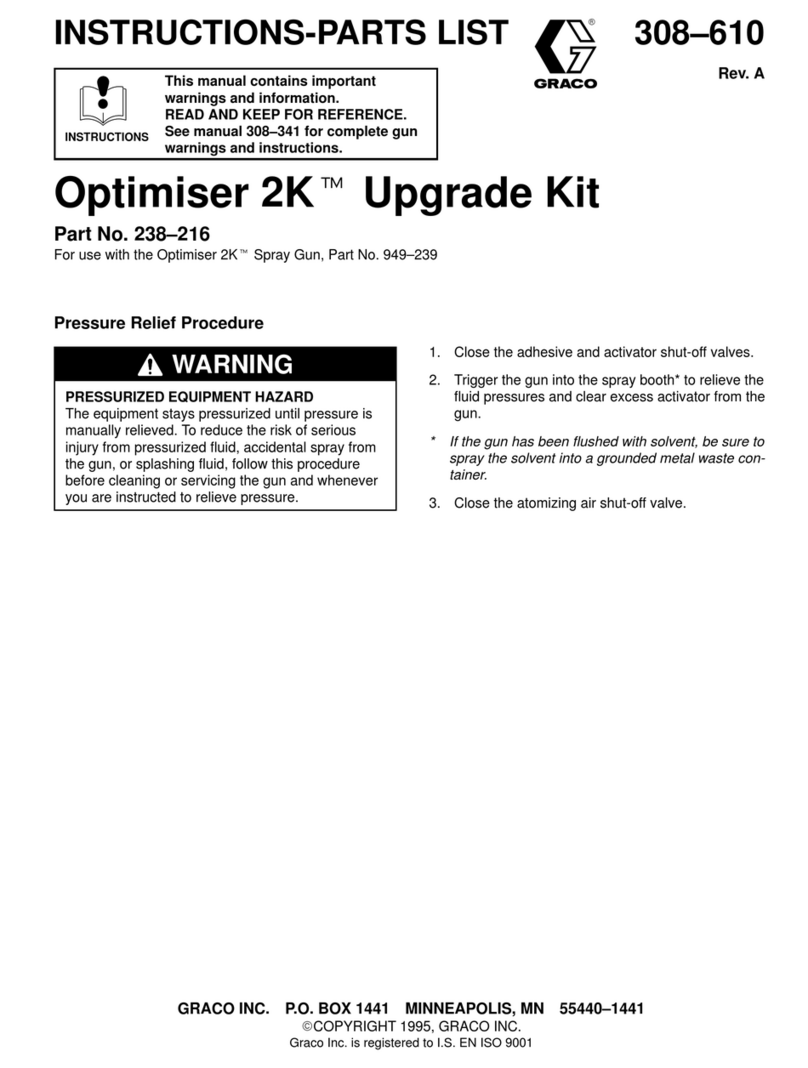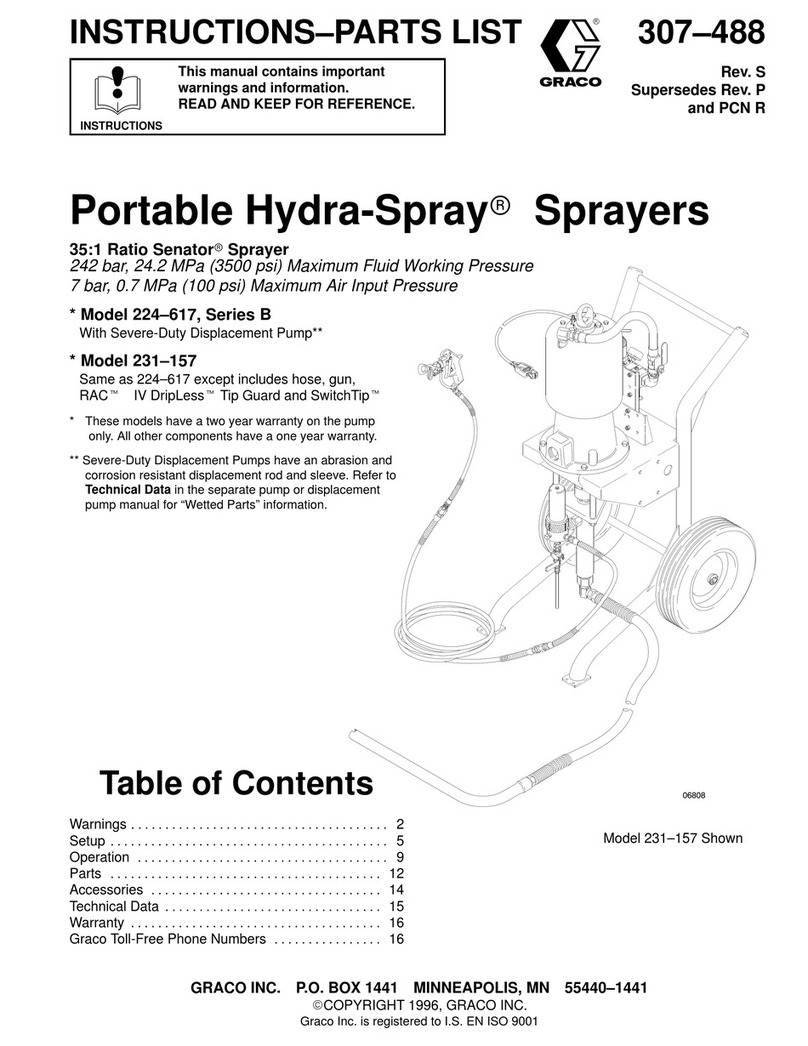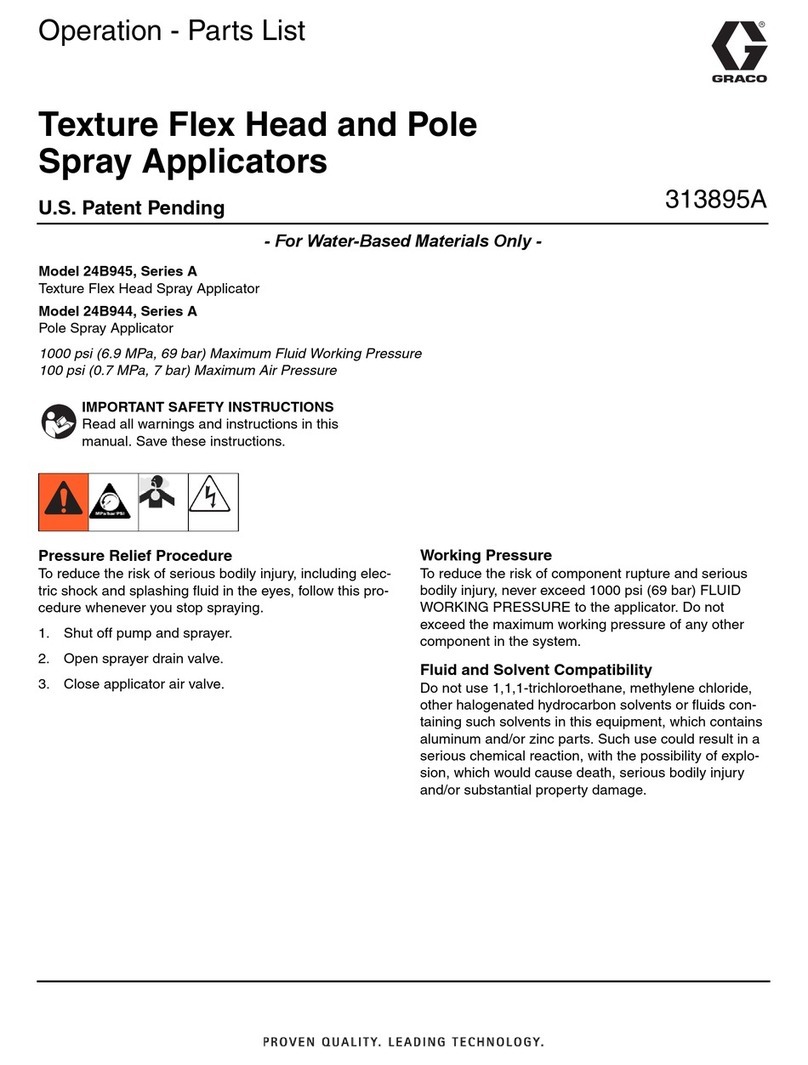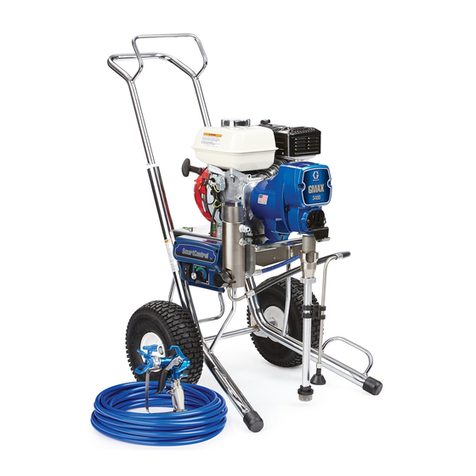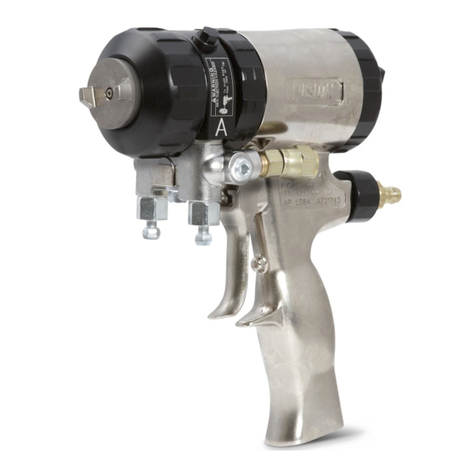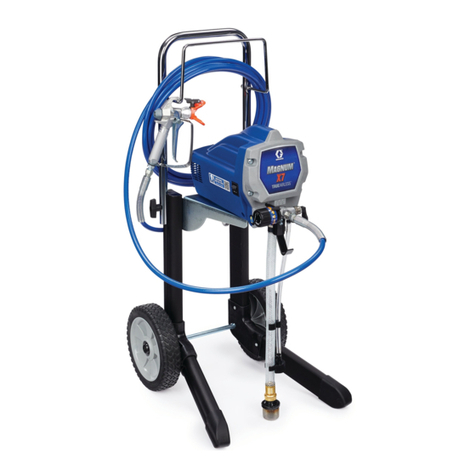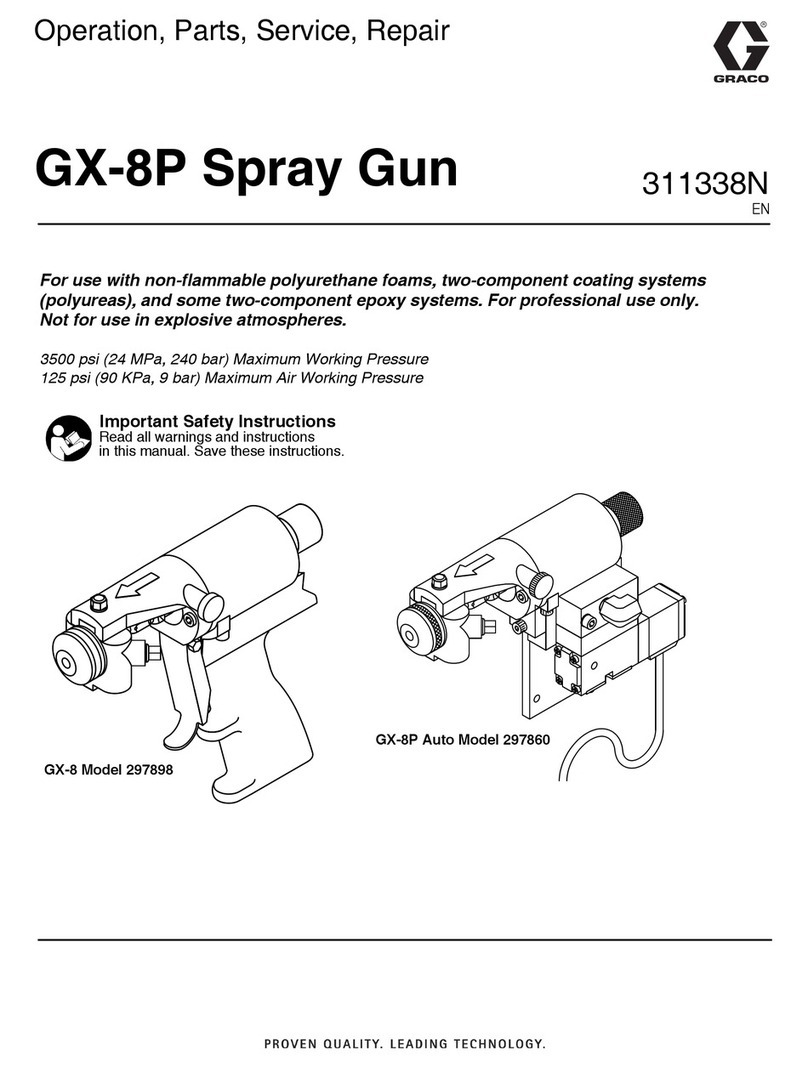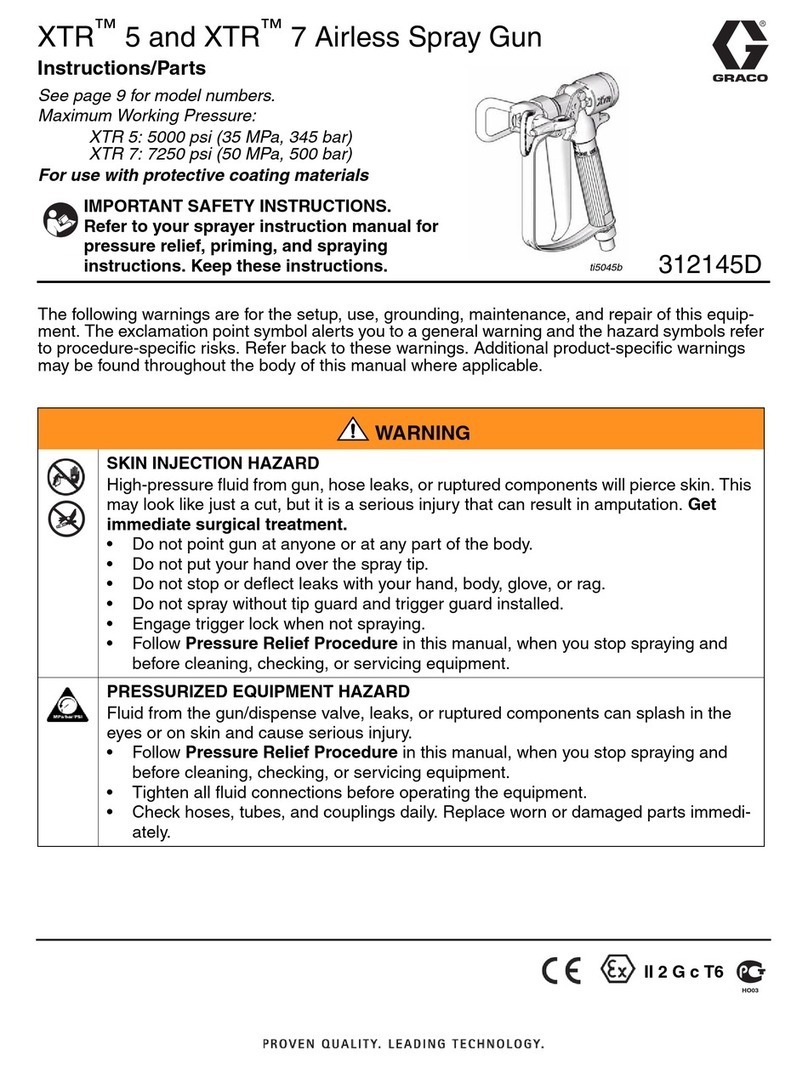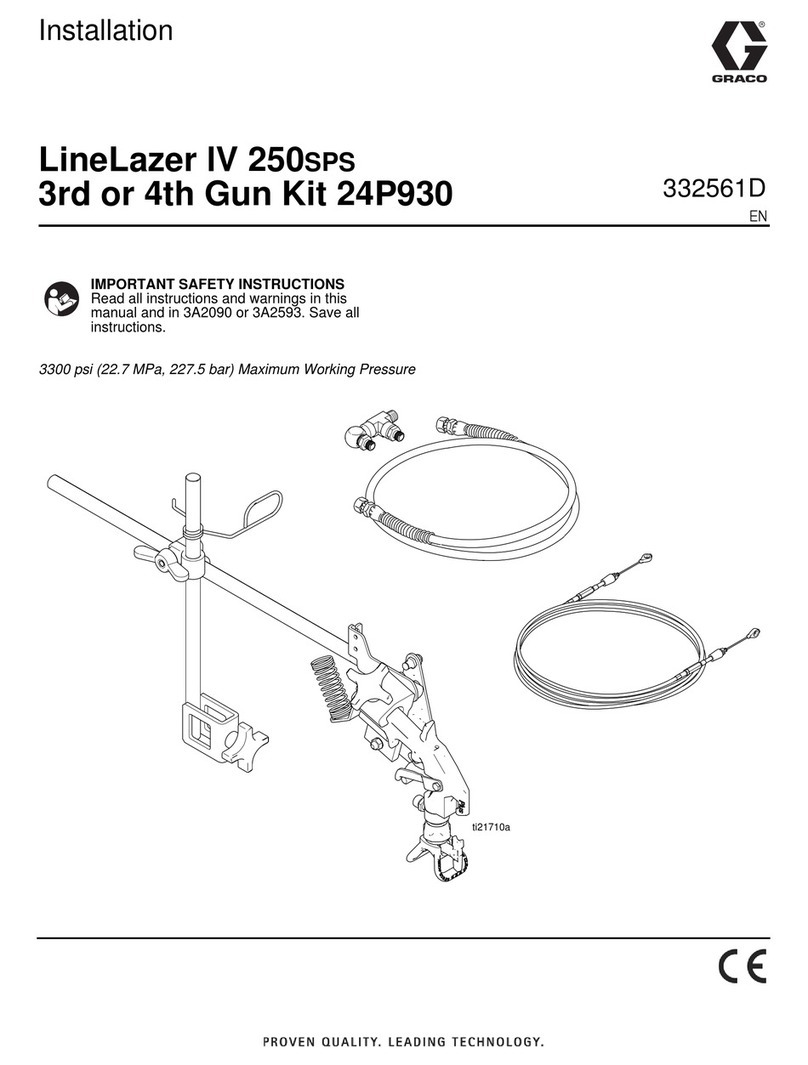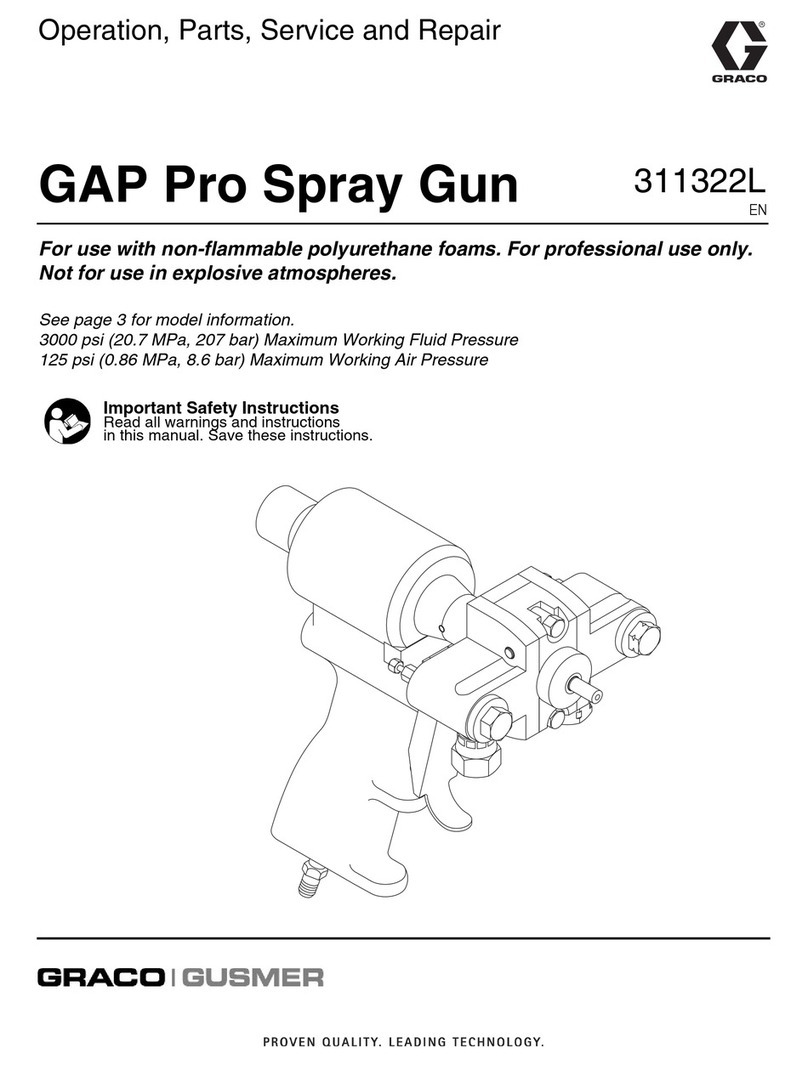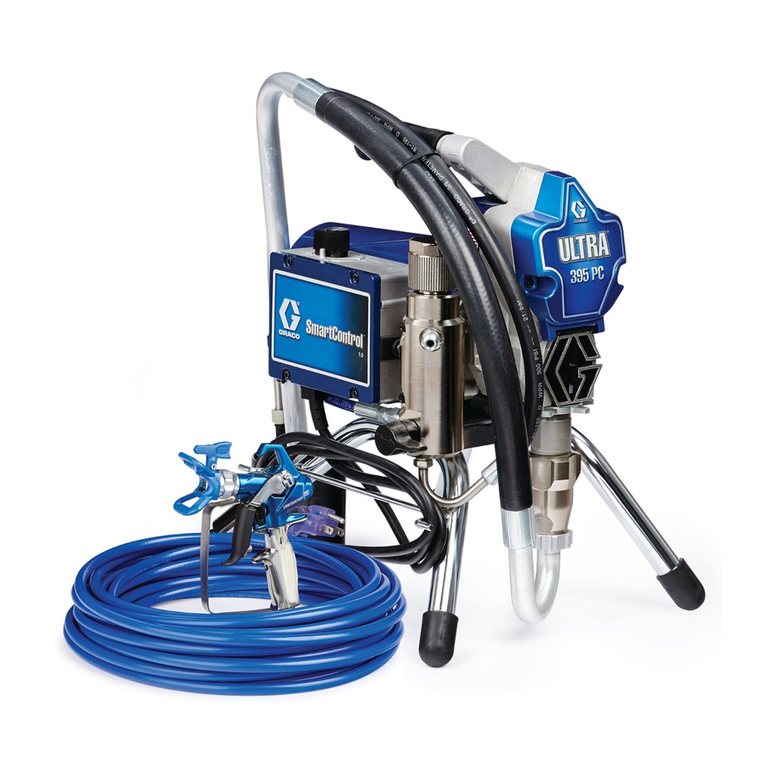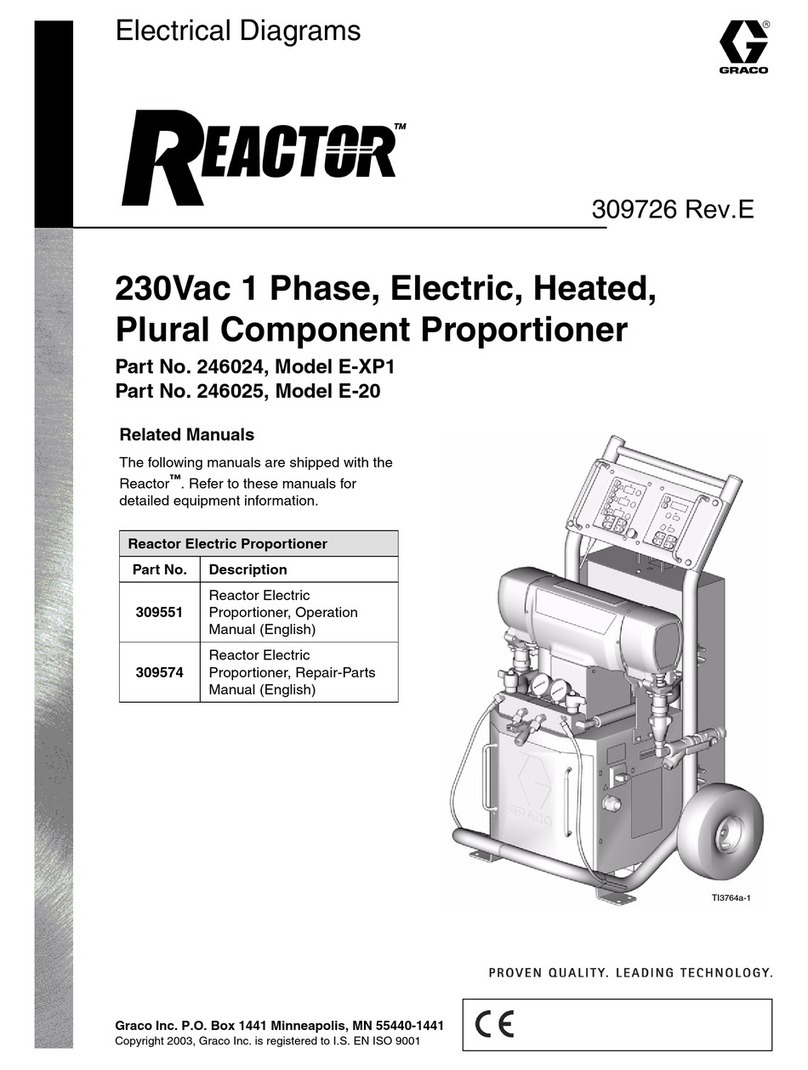
MOVING PARTS
HAZARD
Moving parts can pinch or amputate your fingers or other body fore checking or servicing any part of the sprayer, to prevent it
parts. Keep clear
of
moving parts when starting or operatingthe from starting accidentally.
sprayer. Follow the Pressure Rellef Procedure
on
page
2
be-
EQUIPMENT MISUSE
HAZARD
General
Safety
System Pressure
Any misuse
of
the spray equipment or accessories, such
as
This sprayer
can
develop 195 bar Maximum Working Pressure.
overpresurizing,
modtying
parts, using incompatible chemi-
Besurethatallsprayequipmentandaccessoriesusedarerated
calsandfluids,orusingwornordamagedparts,cancausethem
towithstandthispressure.Donotexceedthemaximumworking
toruptureandresultinfluidinjection,splashingintheeyesoron
Pressureof any comPonentorac~ssoV used in the system.
theskin,orotherserious
bodilyinjury,orfire,explosionorprop-
Fluid
and
Solvent
Compatibility
erly damage.
Neveralterormodifyanypartofthisequipment;
doingsocould
-,
your
chemical
supplierto
compatibility,
cause it to malfunction.
Allchemicalsusedinthesprayermustbechemicallycompatible
with the welted parts shown in the
TECHNICAL DATA
on
page
Checkallsprayequipmentregularlyand
repairorreplaceworn logenated hydrocarbon solvents or fluids containing such
sol-
Do
not
use
1,1,1
-trichloroethane, methylene chloride, other ha-
or damaged parts immediately. vents in this equipment, which contains aluminum andlor zinc
Alwayswearprotectiveeyewear,gloves,clothingandrespirator
the possibility of explosion, which could cause death, serious
parts. Such usecould resuit in aseriouschemical reaction, with
as recommended by the Ruid and solvent manufacturer. bodily injury andlor substantial properly damage.
HOSE SAFETY
High pressure fluid in the hoses can be very dangerous.
If
the Handle and route hoses carefully.
Do
not pull
on
hoses to move
hose develops a leak, split or rupture due to any kind of wear, equipment. Keep the hoses clear of moving parts and hot sur-
damageor misuse, the high pressurespray emitledfrom itcan
faces.DonotuseRuidsorsolventswhicharenotcompatiblewith
cause a fluid injection injury or other serious bodily injury or
theinnertubeandcoverofthehose.DonotexposeGraco
hose
properly damage. to temperatures above
82"
Cor below
-40"
C.
All
fluid
hoses must have sprlng guards on
both
endsl The
sDrina auards helo orotect the hose
from
kinks or bends at or
Hose
Grounding
Continuity
hose for cuts, leaks, abrasion, bulging cover, or damage or
'
limits.
Use
a
iesistance meter in the appropriate range for your
movementofthehosecouplings.
Ifanyofthesecondtionsexist. hose to checkthe resistance,
If
the resistance exceeds the rec-
replace the hose immediately.
Do
not try to recouple high pres- ommended limits, replace
it
immediately.
An
ungrounded or
sure hose or mend
it
with tape or any other device.
A
repaired poorly grounded hose can make your system hazardous,
Also
hose cannot contain the high pressure fluid. read
FIRE
OR
EXPLOSION
HAZARD.
FIRE
OR
EXPLOSION HAZARD
Staticelectricityiscreatedbytheflowoffluidthroughthepump
and hose.
If
every part
of
the spray equipment is not properly
grounded, sparking may occur, and the system may become
hazardous. Sparking may
also
occur when plugging in or
un-
plugging a power supply cord or using a gasoline engine.
Sparks can ignite fumes from solvents and the fluid being
sprayed, dust particles and other flammable substances,
whether youarespraying indoors oroutdoors, andcan causea
fireorexplosionandseriousbodilyinjuryandpropertydamage.
Ifyouexperienceanystaticsparkingorevenaslightshockwhile
entiresystemforpropeigrounding.Donotusethesystemagain
using this equipment, Stop Spraylng Immedlately. Check the
until the problem has been identified and corrected.
Grounding
To reduce the risk
of
static sparking, ground the sprayer and all
yourlocalelectricalcodefordetailedgroundinginstNctionsfor
othersprayequipmentusedorlocatedinthesprayarea.Check
your area and type
of
equipment. Be sure
to
ground all
of
this
spray equipment:
1.
Sprayer: connect a ground wire and clamp (supplied) to
a
true earth ground.
2.
Fluid
hoses:
use only rounded hoses with
a
maximum of
150
m
combined hose
B
ength toensuregrounding continu-
ilv.
See
Hose
Groundlna Contlnultv.
-
3.
Spraygun:obtaingroundingthroughconnectiontoaprop-
<
erly grounded fluid hose and sprayer.
4.
Object being sprayed: according
lo
local code.
6.
All
solvent pails used when flushing, according to local
5.
Fluid supply container: according
to
local
code.
code. Use only metal pails, which are conductive.
Do
not
placethepailonanonconductivesurface,suchaspaperor
cardboard, which interrupts the grounding continuity.
7.
To
maintain
groundingcontinuitywhenflushing
orrelieving
pfessure, always hold a metal part of the gun firmly
lo
the
slde of
a
grounded metal pail, then trigger the gun.
Flushing
Safety
ReducetheriskofRuidinjectioninjury,staticsparking,orspiash-
ofthis manual. Follow the Pressure Rellef Procedure
on
page
ingbyfollowingthefiushingproceduregivenonpagegandlo
the gun firmly to the side of a grounded
metal
pail and use the
2,andremovethespraytipbeforeflushing.Holdametalpartof
lowest possible fluid pressure during flushing.
IMPORTANT
particularly the General Standards, Part 1910, and the Construction Standards, Part 1926
-
should be consulted.
United States Government Safety standards have been
adopted under the Occupational Safety and Health
Act.
These standards
-
307-889
3
..
.,
